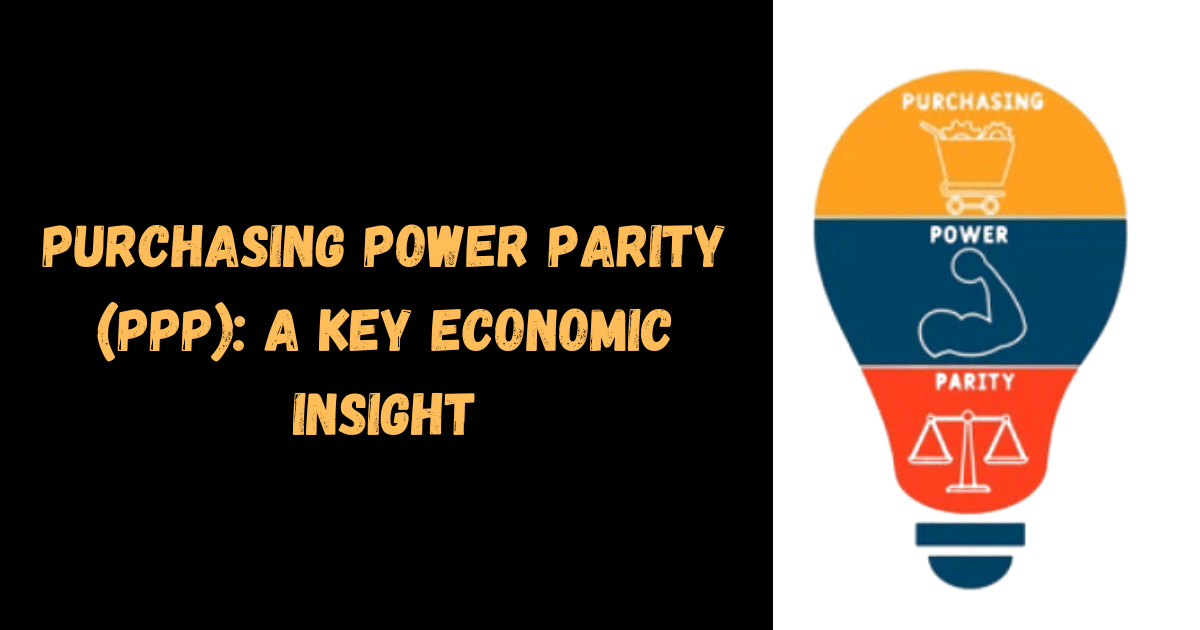Purchasing Power Parity (PPP) is a significant economic concept that helps compare the relative economic productivity and living standards between countries. This theory provides insight into the true value of different currencies and allows for an analysis of how much a particular currency can buy in various nations. PPP plays a crucial role in global economics, trade, and investment by offering a standardized approach to currency valuation and cost-of-living comparisons.
The Origins and Establishment of Purchasing Power Parity (PPP)
The idea of Purchasing Power Parity (PPP) dates back to the 16th century, but it was officially introduced and made widely known by Swedish economist Gustav Cassel in 1918. Cassel suggested that the exchange rate between two currencies should reflect the ratio of the price levels for a similar basket of goods and services in both countries.
What is PPP?
In simple terms, PPP is based on the idea that a similar set of goods and services should cost the same in different countries once adjusted for the exchange rate. This principle assumes that currencies should hold equivalent purchasing power for the same goods and services, making currency value comparisons more accurate.
For example, if a burger costs $5 in the U.S. and ₹250 in India, then the PPP exchange rate would be the one that makes these two prices equal, adjusted for the exchange rate. In this way, PPP aims to equalize the purchasing power of currencies by enabling direct price comparisons between countries.
How is PPP Calculated?
To calculate PPP, economists create a “basket of goods” that represents items commonly consumed across countries. This basket typically consists of basic items like food, housing, transportation, and healthcare. The objective is to capture the true cost of living by comparing the price of this basket in different currencies. The PPP exchange rate is the rate that equalizes the cost of this basket in both countries, reflecting the purchasing power parity between the currencies involved.
For example, if the cost of a basket of goods is $100 in the U.S. but ₹7,000 in India, the PPP exchange rate would be approximately $1 to ₹70, indicating the relative purchasing power of these currencies.
For example, if the cost of a basket of goods is $100 in the U.S.
Applications of PPP
PPP has numerous applications in economics, investment, and policymaking:
1. Comparing Economic Productivity
PPP allows a more accurate understanding of a country’s true economic output by adjusting for price differences. When GDP figures are adjusted for PPP, they reflect the real standard of living by accounting for variations in cost of living, thus providing a better picture of economic productivity.
For instance, India’s GDP per capita might appear low when measured in U.S. dollars. However, when adjusted for PPP, it could be much higher, reflecting the generally lower cost of living in India.
2. Evaluating Investment Opportunities
Investors use PPP to assess potential returns by understanding the true purchasing power of different currencies. By comparing currency values in terms of their purchasing power, investors gain insights into profit margins, costs, and the affordability of doing business in various countries.
For example, an investor evaluating foreign investments might see that while revenue appears lower in U.S. dollars, the local currency’s purchasing power could lower expenses, thus increasing potential profitability.
3. Analyzing Economic Growth
PPP is essential for tracking economic growth over time. By adjusting GDP for PPP, one can better measure a country’s progress relative to others. PPP-adjusted GDP figures help in understanding if a country’s economy is advancing or declining over time in a global context.
For example, if a developing country shows consistent growth in PPP-adjusted GDP, this suggests an improvement in living standards and economic advancement.
4. Policymaking
Governments utilize PPP as a basis for making economic policies. For instance, policymakers may use PPP-adjusted data to assess cost-of-living differences across regions within a country, helping design social welfare programs or allocate resources effectively.
Additionally, PPP is helpful in setting foreign aid budgets, adjusting wages, and developing policies that consider the relative affordability of goods and services for citizens.
Limitations of PPP
While PPP is a powerful tool, it has certain limitations:
1. Non-Tradable Goods and Services
PPP focuses on tradable goods, or those that can be exported or imported. Many services, such as haircuts or housing, are non-tradable and can vary widely in price across countries, impacting the accuracy of PPP comparisons.
2. Quality Differences
The quality of goods and services can vary between countries, making it challenging to achieve a true comparison. For instance, a “Big Mac” in one country may differ in size, ingredients, or preparation standards compared to another, potentially distorting PPP comparisons.
3. Data Challenges
Gathering accurate price data for various goods and services across countries is complex. Variations in regional prices and consumer preferences within countries can impact the reliability of PPP calculations.
4. Short-Term Fluctuations
PPP is a long-term concept, best suited for understanding fundamental economic alignment. Short-term changes in exchange rates or prices due to economic events can distort PPP comparisons if not averaged over a longer period.
Conclusion
Purchasing Power Parity, a concept introduced by Gustav Cassel in 1918, remains a powerful tool for comparing economic realities between countries. By adjusting for differences in prices, PPP provides a more accurate view of living standards, economic productivity, and the relative value of currencies. Although PPP has limitations, including challenges with non-tradable goods, quality variations, and data collection, it continues to be a valuable metric for global economic analysis. When used alongside other economic indicators, PPP offers meaningful insights into purchasing power, investment opportunities, and policy-making across nations.

